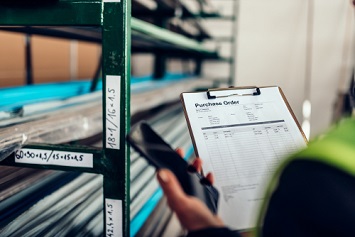As a facilities manager, you are in a position to have a significant impact on the environmental footprint of your business or facility, and help keep your fellow employees healthy. Minimizing waste, conserving water and electricity, improving indoor air quality—all fall within the role of a facilities manager and ultimately have a positive impact on the bottom line. What if paying more attention to what comes into the facility can help? Enhance your impact in these areas (and maybe even make your job a little easier) by becoming a champion of an environmentally preferred (or preferable) purchasing (EPP) within your organization.
What’s an EPP program?
When procuring goods, purchasers don’t often know (or think about) the environmental footprint or potential effects on human health of that material good. This is due to many reasons, including complex supply chains and unlisted chemical ingredients. However, with some restructuring of your business or facility’s purchasing policy, you can make efforts to ensure that goods you are purchasing are responsibly sourced, more energy-efficient, and less toxic to human health and the environment.
An EPP is a framework for businesses to require or give preference to the purchase of goods or services that have a lower impact on the environment and human health than alternatives that serve the same purpose. The determination if a product is “lower impact” usually considers a full Life Cycle Analysis of the product—from the harvesting of raw materials, manufacturing, packaging, distribution, use, reuse, operation, and maintenance, to the final disposal. In an EPP, these “lower impact” products should be substituted when practicable— meaning the product can achieve a satisfactory (or superior) performance at a fair and reasonable price. An EPP program is a written guide that details these policies to ensure that the program is implemented with fidelity across your organization.
Environmental and human health benefits
There are many reasons to implement an EPP at your facility that benefit both the health of the building occupants as well as the environment. An EPP can help increase your business’s sustainability by:
- Conserving natural resources;
- Reducing greenhouse gas (GHG) emissions;
- Minimizing waste sent to landfills;
- Improving air and water quality;
- Avoiding toxic chemicals that can harm the environment and people;
- Supporting recycling and reuse markets; and
- Supporting locally produced items.
Think about this—the purchase of environmentally preferred products may save money over the life of the product if you buy more durable goods, or products that are reusable or refillable, versus buying disposable products.
Getting Started
Numerous universities, (including Duke University, Boston University, and Washington University in St. Louis), cities (including New York City, Minneapolis, and San Antonio), and states (including Massachusetts, Vermont, Washington, New Jersey, and Colorado) have established EPPs. The U.S. government has had an EPP in place since 1993 and has expanded its scope over the years. The U.S. Environmental Protection Agency (EPA) and the General Services Administration maintain the Green Procurement Compilation, a searchable tool for federal purchasers of over 300,000 products that meet federal sustainability requirements. The EPA also maintains the Sustainable Marketplace, a resource that can help you identify which private sector standards and ecolabels you should use when buying greener products. All of these resources can serve as a guide or model when writing an EPP for your own business.
EPPs are not unique to higher education, government entities, or large private companies with the largest environmental footprints. You can implement an EPP at your place of business, no matter its size or your level of experience with sustainability. The first step in implementing an EPP or any new program is to obtain the support of management—their engagement is critical to the success of an EPP. Next, you should determine high-priority purchasing opportunities, that if made more sustainable, would have the largest reduction in environmental impact. The Responsible Purchasing Network (RPN), an international network of buyers dedicated to socially responsible and environmentally sustainable purchasing, has developed a Sustainable Purchasing Prioritization Tool to help you get started. This tool helps you evaluate the potential green product opportunity versus how easy it would be to implement at your business.
It is imperative that all staff responsible for purchasing at the facility be trained on the new policy. In addition, you can make it easier for staff by identifying EPP products in purchasing catalogs or databases that the company utilizes.
It’s unavoidable—every business, facility, and building have some environmental impact. A large part of that impact may be on the supply chain side. However, when you implement an EPP, you are demonstrating that you’re committed to the health of the building occupants and housekeeping staff, as well as to the environment. With a carefully written plan that outlines preferred products, it is possible to have a lower impact without compromising quality or your bottom line.
Tune in tomorrow when we will discuss the specific content you should consider when creating your EPP. We will give tips on what to consider, including how a product is sourced and packaged as well as its toxicity, efficiency, and life cycle.

